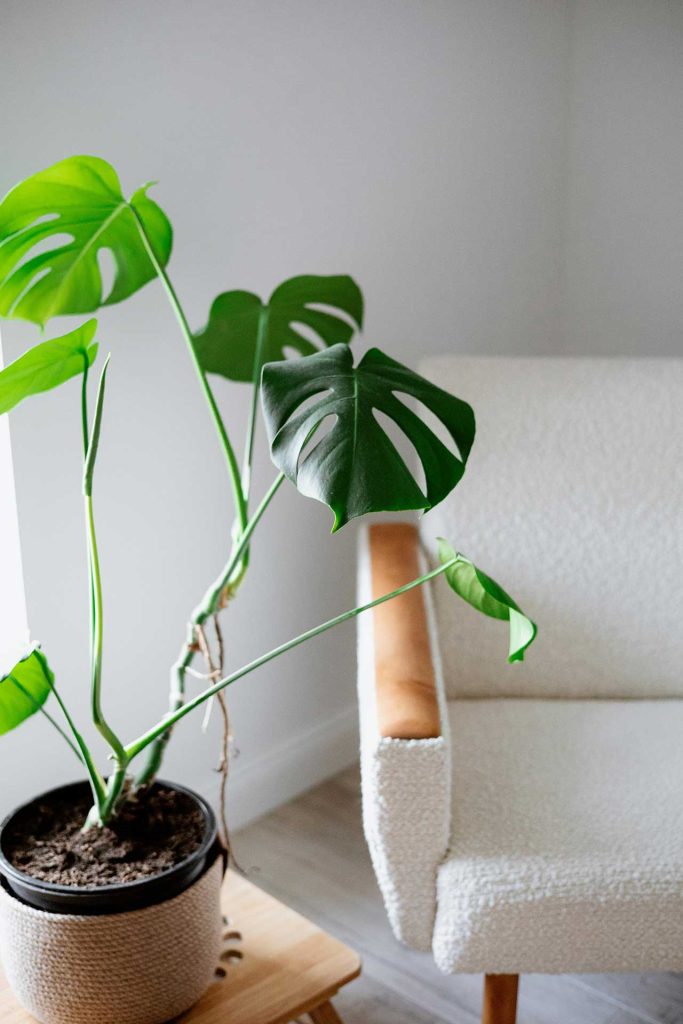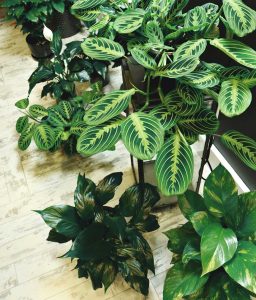The Monstera deliciosa, affectionately known as the Swiss Cheese Plant, is a tropical delight that has become a favorite among indoor plant enthusiasts. This tropical diva has stolen the hearts of plant parents everywhere with its dramatic foliage and low-maintenance charm. With its large, glossy leaves adorned with unique splits, it’s not just a plant but a statement piece for any home. If you’re looking to add a touch of the jungle to your living room, you’ve come to the right place. Let’s dive into the fascinating world of the Monstera deliciosa, covering its origins, how to care for it, and tips for keeping it happy and healthy.
Monstera deliciosa hails from the rainforests of Central America, from Southern Mexico to Panama, where it climbs trees and dreams of reaching the canopy. In the wild, it can grow up to 70 feet tall, but don’t worry – it won’t take over your home (unless it’s plotting something we don’t know about). Indoors, it typically maxes out around 6-8 feet, which is just tall enough to make your friends jealous. The name “deliciosa” refers to its edible fruit, which tastes like a mix of pineapple and banana. I was shocked to discover that this tropical beauty could bear fruit, although it rarely fruits indoors. The fruit, with its intriguing flavor profile, adds another layer of fascination to an already captivating plant.

Caring for Your Monstera Deliciosa
Light
Monstera deliciosa enjoys bright, indirect light, like the filtered sun through a sheer curtain. Direct sunlight is a no-no, unless you want crispy, sunburnt leaves that look like they spent a little too long at the beach. It can handle lower light, but if it starts leaning towards the window like it’s reaching for a lifeline, it’s telling you something. While it can tolerate low light conditions, growth will be slower, and the plant may not develop as many splits or holes in its leaves.
Watering
Think of your Monstera as a drama queen who loves regular attention. Water when the top inch of soil is dry, and it’ll reward you with those iconic split leaves. Keep the soil consistently moist but not waterlogged unless you want your Monstera to stage a root rot rebellion. Overwatering is a common mistake with Monsteras so make sure your pot has drainage holes.
Humidity
Coming from the tropics, your Monstera is all about that humidity life. Aim for high humidity. Think of her as a menopausal woman, but if your home is drier than a desert, your Monstera might start to sulk. You can boost humidity by considering a humidifier, or placing a tray of water near the plant. Misting is an option, but remember—it’s not a shower, so keep it light.
Temperature
Keep things cozy between 65-85°. If it gets too cold, your Monstera might go on strike, and no one wants a sullen plant. It’s best to keep it away from cold drafts and sudden temperature changes.
Soil and Fertilizer
Use a potting mix that drains well, preferably a mix with added perlite and rich in organic matter. Think of it as giving your plant the royal treatment—it wants the best, and that includes avoiding soggy feet. Feed your Monstera monthly during the growing season (spring and summer) with a balanced, water-soluble fertilizer. In fall and winter, cut back; it’s on a diet.
Pruning and Support
Trim yellow or damaged leaves to keep your Monstera looking sharp. It’s like giving it a regular haircut – nobody likes split ends. Regular pruning helps maintain its shape and encourages new growth. In its natural habitat, Monstera deliciosa climb trees. Provide a moss pole or trellis for climbing. Without support, your Monstera might start sprawling like a lazy cat. Encourage it to climb and display its magnificent leaves.
Propagation
Snip a section of the stem with at least one node and a few leaves. Place it in water or soil, and soon you’ll have a baby Monstera to nurture or gift to a friend (or keep for yourself, no judgment). Roots should develop in a few weeks.
Common Problems and Solutions
Yellow Leaves:
Often due to overwatering or poor drainage. Remember, your Monstera likes moisture, not a swamp, so adjust your water schedule if you need to.
Brown Leaf Edges
Typically a sign of low humidity or underwatering. Think of it as a reminder to increase humidity or check your watering habits.
Pests
Watch out for spider mites, mealybugs, and scale. Treat with insecticidal soap or neem oil, and remind them they’re not welcome in your plant paradise.
Conclusion
Monstera deliciosa is more than just a plant; it’s a conversation starter, a piece of living art, and a low-key demanding (but lovable) housemate. With the right care, your Monstera will thrive and turn your home into a tropical haven of lush, green oasis. With the right care and attention, your Monstera will thrive, reward you with its stunning foliage, and bring a touch of the jungle into your home. Embrace the journey of nurturing this beautiful plant, and enjoy the vibrant, exotic ambiance it creates. Happy planting, and may your Monstera be ever lush and full of character!



Hello! I hope you’re having a great day. Good luck 🙂
Современная спецтехника Unisteam com – надежность, проверенная временем
завод по производству спецтехники юнистим unisteam com